
Last Updated on November 14, 2025 by David
Effective Techniques to Restore Sandstone Floors in Highclere Homes
- Understand the Porosity and Sensitivity of Sandstone: Recognizing that sandstone is highly porous and sensitive requires employing gentle, stone-safe cleaning methods to avoid etching and erosion.
- Regular Care with pH-Neutral Cleaners: For ongoing maintenance, utilize pH-neutral cleaners, while considering alkaline solutions for addressing significant soiling—always ensure to follow up with thorough rinsing and resealing.
- Effective Maintenance of Topical Sealers: Properly maintain topical sealers to enhance color and protection, especially in high-traffic or decorative areas.
- Focus on Meticulous Surface Preparation: Conduct careful surface preparation, gentle agitation, and residue-free rinsing, followed by sealing to prevent future stains effectively.
- Implement Regular Maintenance Practices: Use soft cleaning tools and respond to spills immediately to preserve the finish and reduce the need for extensive cleaning cycles.
What Makes Sandstone Unique Compared to Other Natural Stones?

Analyzing the Composition and Unique Porous Nature of Sandstone
Sandstone is a distinctive sedimentary stone formed from compacted sand and mineral particles, which sets it apart from other construction materials. Its natural porosity allows it to absorb moisture and stains if not sealed properly, leading to potential long-term issues. Depending on the cutting and finishing techniques applied, the surface can appear either smooth or textured. Despite these variations, all sandstone floors require gentle, stone-safe maintenance to uphold their structural integrity and visual appeal. Regular upkeep is essential to prevent severe damage, which could result in costly repairs down the line.
Identifying Common Challenges for Sandstone Floors in Highclere Homes
Within the charming town of Highclere and its surrounding regions, sandstone floors grace many historic properties and period homes. Unfortunately, these beautiful floors face wear and tear over time due to foot traffic, exposure to harsh cleaning agents, and seasonal moisture fluctuations. Such conditions can lead to surface deterioration, uneven discoloration, and degradation of the sealant. Since sandstone is softer than both granite and slate, it is particularly susceptible to erosion, necessitating regular maintenance to retain its stunning appearance and functional attributes. Homeowners must take proactive measures in maintaining their floors to prolong their lifespan.
Pro Tip: Essential Products for Daily Care of Sandstone Floors
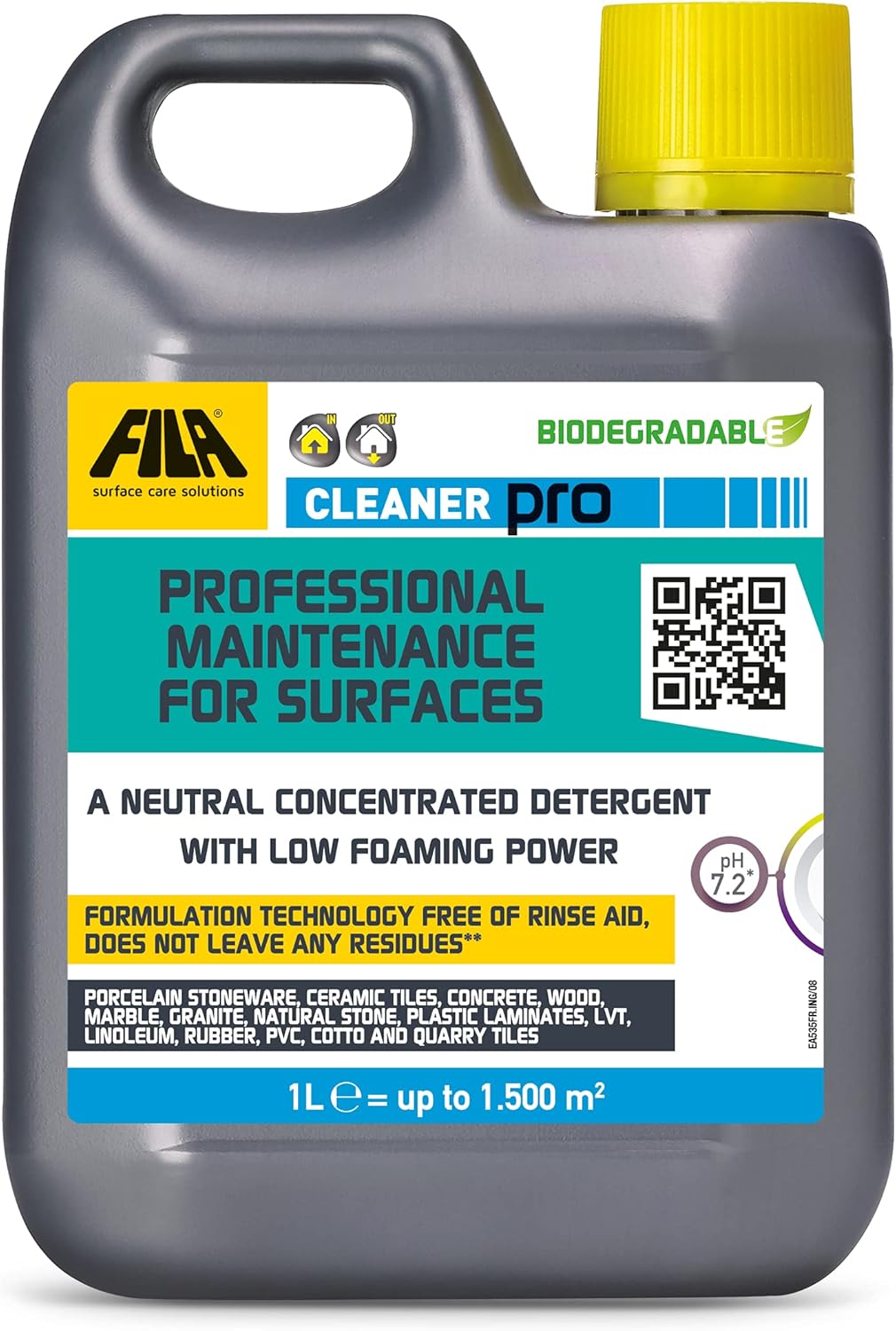
Fila Pro Floor Cleaner
|
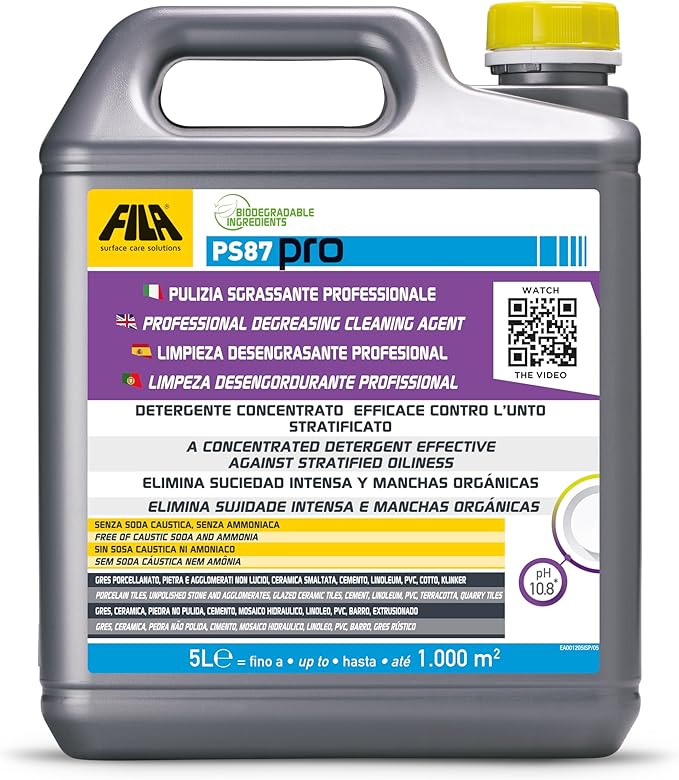
FILA PS87 PRO
|
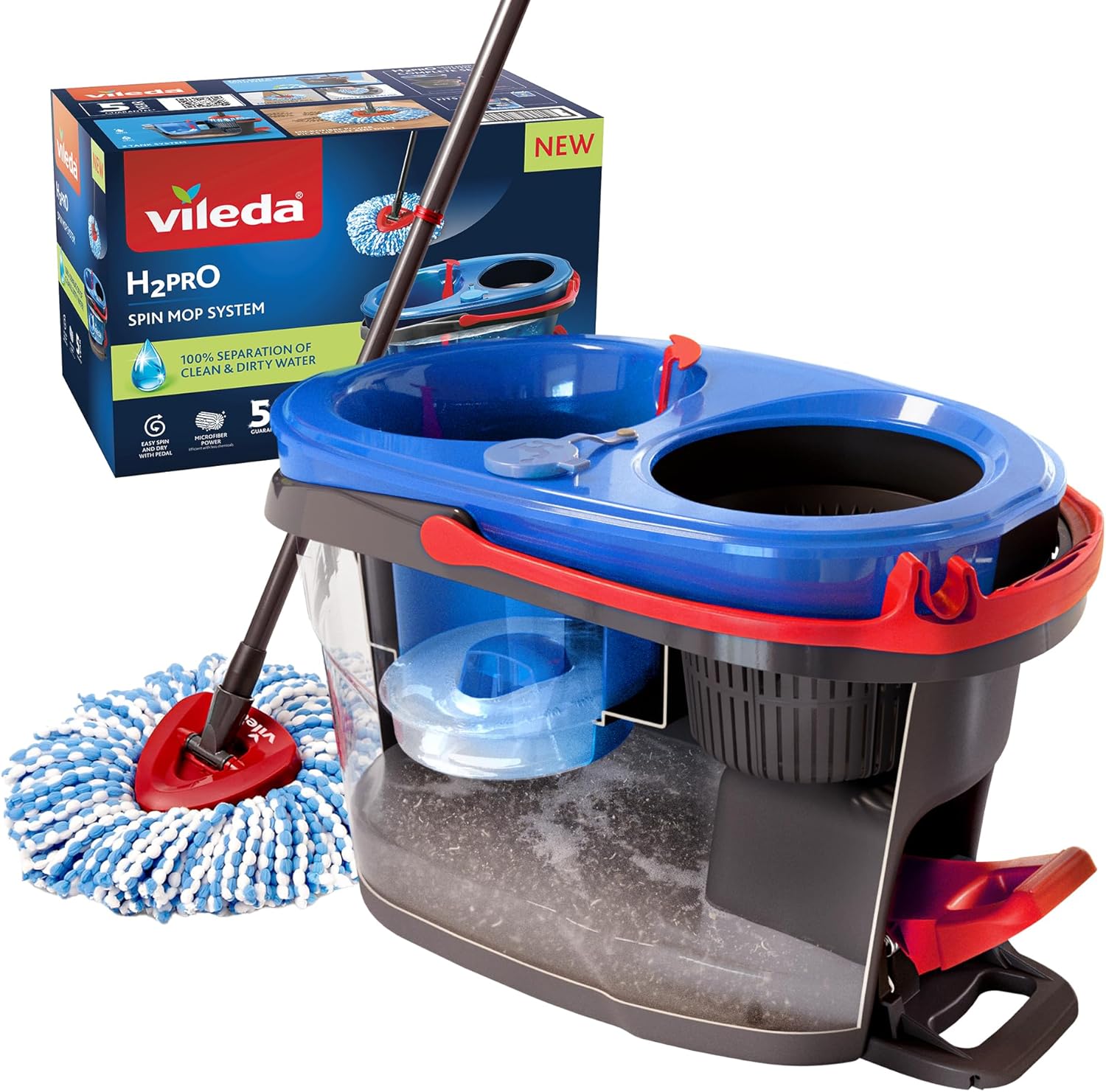
Vileda H2PrO Spin Mop System
|
What Warning Signs Indicate Your Sandstone Floor Needs Restoration?
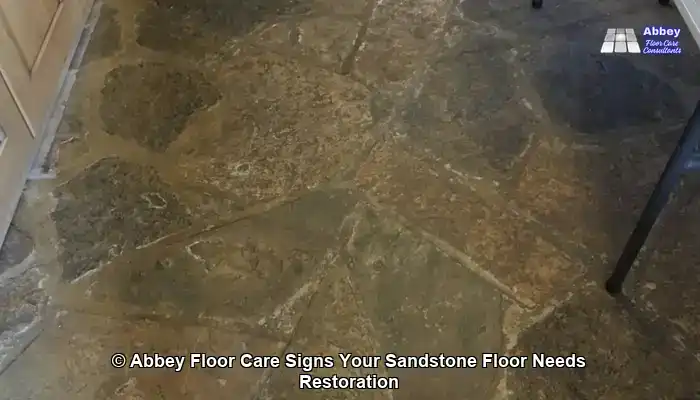
What Are the Main Indicators of Surface Wear and Discoloration?
Over time, sandstone floors may lose their original color and texture as a result of foot traffic, cleaning residues, and moisture exposure. If you notice a surface that appears patchy, dull, or uneven, this may signify that the protective layer has worn down, allowing the stone to absorb dirt and liquids more readily. Such discoloration detracts from your home’s overall aesthetic and can lead to further damage if not promptly addressed. Regular inspections accompanied by timely restoration actions can significantly extend the lifespan of your sandstone flooring.
How Can You Recognize Loss of Sealant Protection?
When the sealant on your sandstone floor begins to degrade, the stone becomes increasingly porous and prone to staining. You may observe that water no longer beads up on the surface but instead seeps in, indicating a lack of proper protection. This situation calls for resealing as part of the restoration process to ensure both longevity and continued visual appeal. Ignoring this issue can result in unsightly stains and a more complex restoration process, which could become both time-consuming and costly.
What Signs Indicate a Slippery or Uneven Texture?
Sandstone should offer a firm and consistent feel beneath your feet. If you encounter areas that have become slippery, powdery, or rough, it may signal surface erosion or a buildup of residues. These changes serve as clear indicators that the floor requires thorough cleaning and resealing to restore both safety and visual charm. Maintaining a stable texture not only enhances aesthetic appeal but also ensures that your floors remain safe for all household members. Regular maintenance checks help prevent accidents and preserve the integrity of your beautiful sandstone floors.
How to Select the Optimal Cleaning Method for Sandstone?
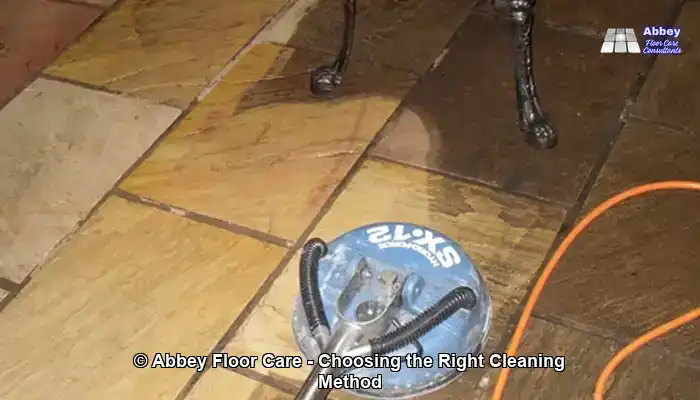
When Is It Appropriate to Use pH-Neutral Cleaners for Sandstone?
For lightly soiled sandstone floors, a pH-neutral cleaner is typically the most effective choice. These products efficiently lift surface dirt without compromising the stone’s mineral structure or sealant. They are suitable for routine maintenance and safe for use on both sealed and unsealed sandstone, provided that the soil load is minimal. Using the appropriate cleaner helps to maintain the stone’s integrity while ensuring optimal cleanliness. Regular application of pH-neutral cleaners can significantly prolong the life of your sandstone flooring.
When Should Alkaline Cleaners Be Used for Heavily Soiled Areas?
In instances where sandstone has absorbed oils, grime, or organic residues—especially in kitchens or entryways—a stronger alkaline cleaner may be necessary. These solutions emulsify entrenched soils and assist in lifting them from the porous surface, keeping your floors looking pristine and appealing. It is essential to rinse thoroughly to prevent residue buildup after utilizing these potent cleaners. If the cleaner requires extended dwell time, resealing the floor afterward is advisable to restore protection and prevent future staining. Proper cleaning techniques will ensure your sandstone floors retain their beauty for years to come.
Why Should You Avoid Acidic or Abrasive Cleaning Products?
Acidic cleaners, including vinegar and limescale removers, can lead to etching and irreversible damage to sandstone. Similarly, abrasive powders and stiff brushes can scratch the surface or erode softer areas, compromising the stone’s natural beauty. Always opt for stone-safe products and tools that clean effectively without jeopardizing the integrity of your floors. Selecting the right cleaning materials is vital for maintaining the long-term aesthetics and durability of your sandstone surfaces.
Your Complete Guide to Sandstone Floor Restoration
How to Properly Prepare Surfaces and Remove Dust Before Cleaning?
Begin by clearing the area of any belongings and using a soft-bristle broom or a vacuum set to hard-floor mode to remove loose debris. It is crucial to avoid dragging furniture or utilizing metal-edged tools, as these can scratch or chip the stone surface. If the floor has old polish or residue, applying a stone-safe stripper prior to cleaning can be beneficial. Proper surface preparation is essential for successful restoration, ensuring that subsequent cleaning and sealing processes are effective.
What Best Practices Should You Follow for Cleaner Application and Surface Agitation?
Select an appropriate cleaner based on the level of soil present. For general grime, a pH-neutral solution is ideal. For heavy contamination, an alkaline cleaner diluted according to the product instructions should be utilized. Apply the solution evenly and allow it to dwell for 5 to 15 minutes. Gently agitate using a white pad or soft brush to lift embedded dirt without damaging the surface. This careful approach ensures effective cleaning while preserving the integrity of your sandstone floors.
How Can You Rinse and Dry Without Leaving Residue on Sandstone Floors?
Thoroughly rinse the floor with clean water, using a wet vacuum or multiple mop passes to remove all residues. Any leftover cleaner can create streaks or dull the finish, detracting from the beauty of your sandstone flooring. After rinsing, allow the floor to dry completely before assessing whether sealing or polishing is necessary. A dry microfiber mop can expedite the drying process and prevent unsightly water spots. This step is critical for achieving a beautifully restored floor.
How to Seal Sandstone Floors for Long-Term Protection and Maintenance?
Understanding the Differences Between Impregnating and Topical Sealers
Impregnating sealers penetrate the sandstone surface and provide internal protection, offering invisible resistance to moisture and stains. These sealers are ideal for homeowners seeking a natural matte finish. Conversely, topical sealers create a protective layer on the surface, which can enhance color or add a satin or glossy sheen. When properly maintained and replenished, topical sealers are an excellent choice for high-traffic areas or decorative finishes, ensuring that your floors remain both visually appealing and functional.
How to Apply Sealer Correctly for Optimal Protection?
Before applying the sealer, ensure the floor is completely clean and entirely dry. Use a lint-free cloth, sponge, or applicator pad to apply the sealer evenly. Work in small sections, allowing the product to absorb for the recommended period. Wipe away any excess to avoid streaking or residue. In some cases, a second coat may be necessary, particularly on more porous or weathered stone. Proper sealing not only extends the life of your sandstone floors but also enhances their overall appearance.
When Should You Reseal Your Sandstone Floor, and How Often?
Most sandstone floors benefit from resealing every 2 to 4 years, depending on foot traffic and moisture exposure. In areas like kitchens, hallways, or entryways, resealing may be required more frequently. To check if resealing is necessary, conduct a simple water-drop test: if water soaks in rather than beads up, it is time to reseal. Regular inspections are crucial to ensure the floor remains protected and easy to clean. Timely resealing helps maintain the beauty and durability of your sandstone flooring.
Enhancing the Aesthetics and Safety of Your Sandstone Floors
How to Utilize Color-Enhancing Sealers for Improved Visual Appeal?
If your sandstone floor appears faded or washed out, using a color-enhancing sealer can deepen its natural tones and reveal the stone’s unique character. These sealers slightly darken the surface and highlight variations in grain and mineral content. They are especially effective on weathered or pale sandstone but should only be applied after thorough cleaning and complete drying. This enhancement not only boosts aesthetics but also contributes to long-lasting durability.
How to Improve Slip Resistance on Sandstone Floors?
In moisture-prone areas such as kitchens, bathrooms, or entryways, enhancing slip resistance is a critical safety consideration. Certain sealers come with anti-slip additives, or you can apply a separate non-slip treatment over the sealed surface. Always conduct a test in a small area first to ensure the finish remains appealing and easy to maintain while enhancing safety. Addressing slip resistance not only protects your floors but also ensures the safety of everyone who walks on them.
What Buffing and Polishing Options Are Available for Sandstone?
While sandstone is not typically polished to a high gloss like marble, light buffing with a soft pad can improve its appearance and feel underfoot. For a subtle sheen, utilize a stone-safe polishing compound specifically designed for honed finishes. Avoid wax-based products, as they can trap dirt and create an uneven shine over time. Regular buffing can enhance the visual appeal of your sandstone flooring while maintaining its structural integrity.
Professional Recommendations for Maintaining Sandstone Floors in Highclere Homes
What Should Your Weekly and Monthly Cleaning Routines Include for Optimal Care?
To maintain the pristine appearance of your sandstone floors, regularly dry mop with a microfiber pad to remove dust and grit. For weekly cleaning, use a diluted pH-neutral cleaner, ensuring that you avoid soaking the floor. Monthly, inspect high-traffic areas for signs of wear and apply cleaner as necessary. It is essential to avoid over-wetting, as this can weaken sealants over time. Consistent maintenance prevents buildup and prolongs the life of your stunning sandstone flooring.
What Are the Most Effective Tools for Ongoing Sandstone Care?
Flat microfiber mops are ideal for sandstone since they effectively capture fine particles without scratching the surface. It is best to avoid sponge mops, which can inadvertently push dirt into the stone’s pores. For larger areas, consider using a spray mop with refillable cartridges, allowing for controlled application of stone-safe solutions. Always rinse mop heads thoroughly after each use to prevent residue accumulation and maintain effective cleaning. Utilizing the right tools simplifies maintenance and enhances the longevity of your floors.
How to Quickly and Effectively Manage Spills and Stains?
Immediate action is crucial when addressing spills on sandstone. Blot spills promptly with a soft cloth or paper towel, being careful not to rub, as this can spread the stain further. For oily or colored spills, apply a small amount of stone-safe cleaner and rinse with clean water. If a stain persists, a baking soda and water poultice may be effective, but always test it first to ensure it will not affect the finish. Quick intervention prevents permanent marks and helps keep your sandstone floors looking fresh and inviting.
Frequently Asked Questions About Sandstone Floor Restoration
Can Steam Cleaners Be Safely Used on Sandstone Floors?
It is advisable to avoid steam cleaners on sandstone. The high heat and moisture can weaken sealants and drive water deep into the stone’s porous structure, possibly causing long-term damage. Instead, stick to stone-safe liquid cleaners and gentle agitation for thorough deep cleaning. This approach effectively maintains the integrity of your floors while ensuring a clean and revitalized appearance.
What Should You Do If Your Floor Shows Signs of Damage?
If your sandstone floor displays deep stains, scratches, or surface erosion, basic cleaning may not suffice for restoration. In such situations, professional honing or resurfacing may be necessary to rejuvenate the stone’s appearance. Once repairs are completed, sealing becomes essential to prevent future damage and facilitate maintenance. This comprehensive strategy ensures that your sandstone flooring retains its beauty and functionality for years to come.
How Long Can You Expect Your Restoration Efforts to Remain Effective?
With proper sealing and diligent maintenance, a restored sandstone floor can stay in excellent condition for several years. However, areas with high foot traffic may require touch-ups or resealing every 2 to 3 years, while areas with lower traffic can extend the intervals between maintenance. Regular care and attention can significantly enhance the longevity of your sandstone flooring, making it a wise investment for your home.
The Article How to Restore Sandstone Floors in Highclere Homes first found on https://www.abbeyfloorcare.co.uk
The Article Restoring Sandstone Floors in Highclere Homes: A Guide appeared first on https://fabritec.org
The Article Restoring Sandstone Floors: A Highclere Homes Guide Was Found On https://limitsofstrategy.com

